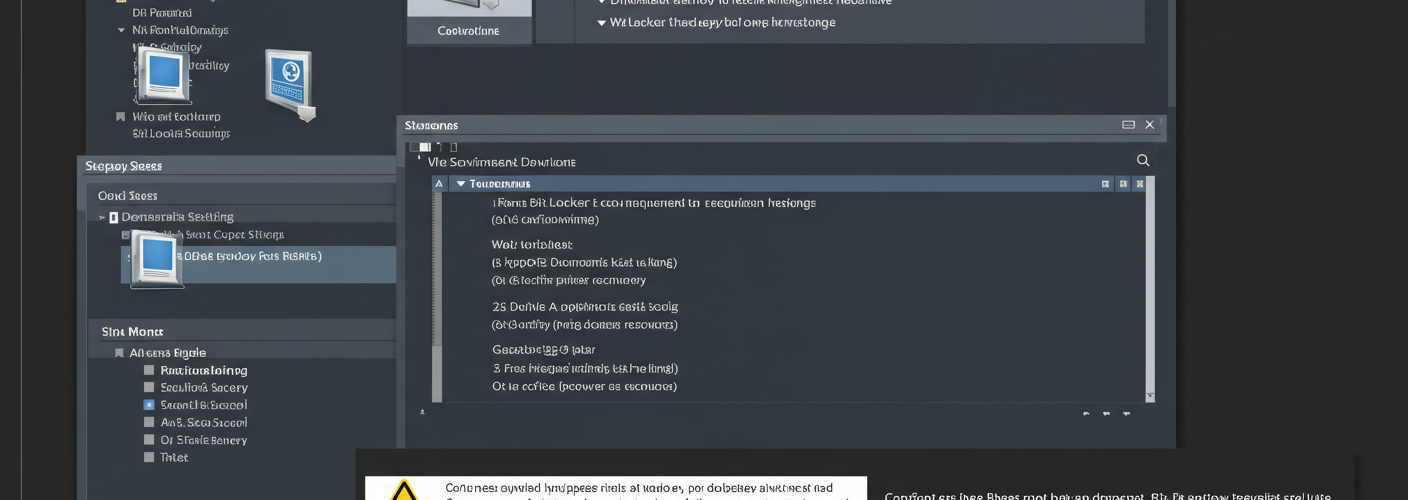Preventing BitLocker from Requiring a Recovery Key After Minor Hardware Changes
BitLocker Drive Encryption is a powerful tool available in Windows that helps secure your data by encrypting entire drives. However, one of the common frustrations users face with BitLocker is the requirement to input a recovery key after making even minor hardware changes. This can be particularly annoying for those who regularly upgrade or modify their computers, such as adding a new GPU (graphics processing unit) or making other similar changes. Fortunately, there are a few strategies you can use to minimize these disruptions.
Understanding Why BitLocker Locks You Out
BitLocker is designed to protect your data, and part of that protection includes its response to changes in the computer’s hardware configuration. When you add or replace hardware components — particularly those associated with the motherboard, such as GPUs, SATA controllers, or even certain USB devices — BitLocker may interpret this as a potential threat. As a result, it requires the recovery key to ensure that the user is authorized to access the encrypted data.
Potential Solutions to Limit Recovery Key Prompts
- Utilize TPM (Trusted Platform Module): If your computer has a TPM chip, enabling it can help reduce the frequency of recovery key requests. TPM is designed to store encryption keys securely and can help validate the hardware configuration. Ensure that your BitLocker is configured to use TPM together with additional authentication. This combination helps the system recognize legitimate hardware changes, minimizing recovery prompts.
- Manage BitLocker Settings: Windows lets you customize BitLocker settings via the Control Panel or the Group Policy Editor (for advanced users). By accessing BitLocker Drive Encryption settings, you can disable certain features requiring user prompts when changes occur. While this should be done cautiously, adjusting these settings might prevent unnecessary demands for recovery keys.
- Updating Group Policy: If you are familiar with Group Policy settings, navigate to
Computer Configuration > Administrative Templates > Windows Components > BitLocker Drive Encryption > Operating System Drives. Here, you can find settings like “Require additional authentication at startup.” Make adjustments to allow for a smoother experience, especially if you are part of a domain environment. - Backup Key Options: You mentioned that you back up your key as a file. It’s worth noting that the type of storage medium can impact how BitLocker reacts to hardware changes. While backing up your key as a file is generally safe, ensure that you store this file in a secure and accessible location. Also, consider using other backup options, such as saving the key to a Microsoft account, Active Directory, or a USB drive, to avoid issues in case of hardware alteration.
- Regularly Update Drivers and BIOS: Keeping your system updated can also help. Sometimes, outdated drivers or BIOS firmware can contribute to unnecessary prompts. Regular updates ensure that your hardware is running smoothly and may help the system recognize legitimate changes without triggering BitLocker.
Conclusion
While BitLocker is a robust security feature, dealing with the inconvenience of recovery key prompts after minor hardware changes can be irritating. By understanding how BitLocker interacts with your system’s hardware and implementing some of the strategies mentioned above, you can often reduce these interruptions and enjoy a smoother experience while keeping your data secure. Always remember to back up your recovery key carefully, as it’s essential for data access in those unexpected situations.





Add comment